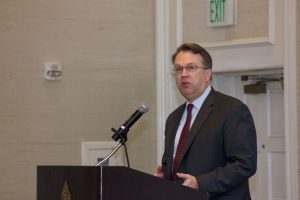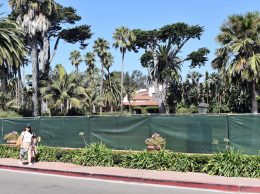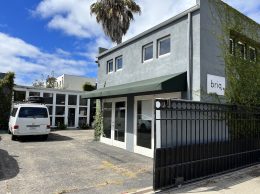San Francisco Federal Reserve Bank CEO says he’s bullish on U.S. economy at Santa Barbara event
IN THIS ARTICLE
- Banking & Finance Topic
- pacbiztimes Author
By pacbiztimes Friday, January 8th, 2016

John Williams, president and CEO of the Federal Reserve Bank of San Francisco, speaks during a California Bankers Association event at the Four Seasons Biltmore in Santa Barbara on Jan. 8. (Alex Kacik)
All in all, things are looking good for the U.S. economy, Federal Reserve Bank of San Francisco President and CEO John Williams said in Santa Barbara the morning of Jan. 8.
Despite China’s market uncertainty and the global volatility, Williams doesn’t expect that to have a major impact on the U.S. economy. He pointed to positive job growth, close to full employment and consumer spending increasing at a solid pace, especially in regard to auto sales.
“The market turmoil or volatility is not something that directly affects my outlook right now,” he said during a California Bankers Association event at the Four Seasons Biltmore. “To be honest, what’s happening with global commodity prices and the dollar have a bigger effect on the U.S. economy than the Chinese stock market.”
The Fed’s decision to slightly bump interest rates in December was the right move, Williams said, and will allow the U.S. central bank to keep future hikes gradual.
The Federal Reserve is helping the economy slowly adjust to higher interest rates than it has seen in seven years. While the balance sheet has swelled to more than $4.5 trillion, officials will likely take five or six years to reduce it to a more normal size, Williams said.
“Our plan is to shrink the balance sheet ‘organically,’ if you will, through the maturation of assets,” Williams wrote in prepared remarks. “It’s likely going to take at least six years to get the balance sheet back to normal, which is in keeping with the overall approach to removing accommodation gradually.” “Normal” translates to around $1.5 trillion, he said.
While Williams expects the unemployment rate to decline to around 4.5 percent by mid-year, he was less optimistic about the labor force population rate, which he said was unlikely to rebound to a more normal level. He cited the aging population, the increase in single-income families and the younger demographic working less. Marginal workers have decreased by 20 percent in the past year alone, Williams said.
“Their reentry rate back into the labor force has actually fallen,” he wrote. “When you combine this with the aging workforce, it looks unlikely that participation will rise.”
While inflation is too low at 0.5 percent and below the Fed’s 2 percent target, it should increase as the economy strengthens, Williams said. He expected it to be near the target by the end of next year.
“Looking ahead, as the effects of the dollar and oil prices ebb and the economy strengthens further, I see inflation moving back up and expect that we’ll be at or near our 2 percent target by the end of next year,” Williams wrote.
• Contact Alex Kacik at [email protected].
Related Articles
 Friday, September 16th, 2022
Friday, September 16th, 2022











